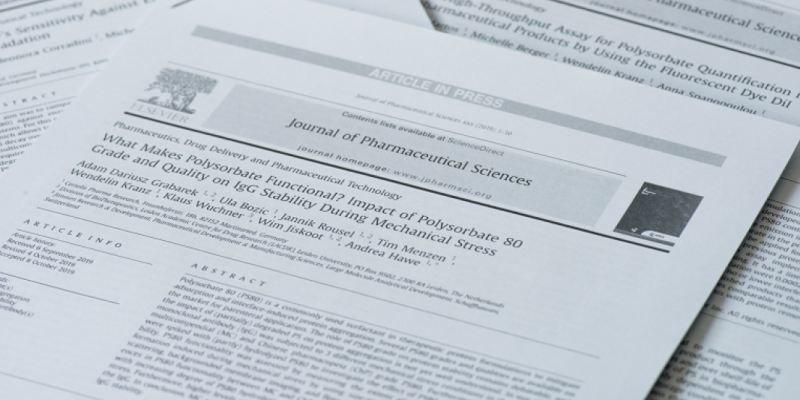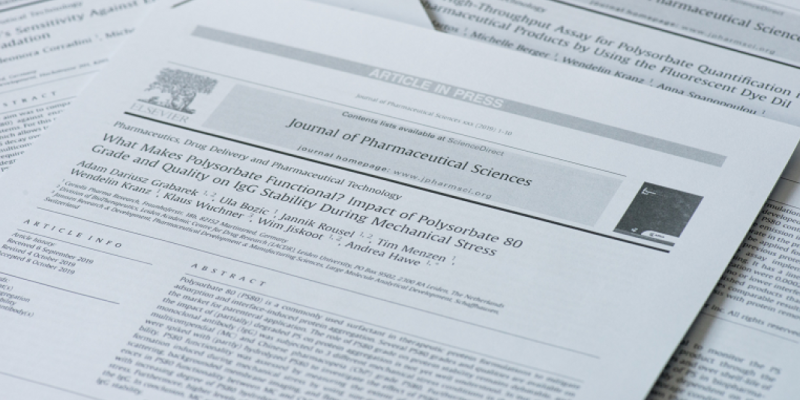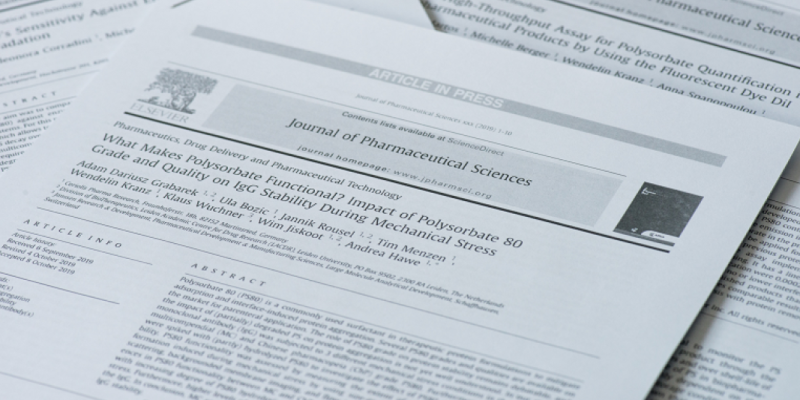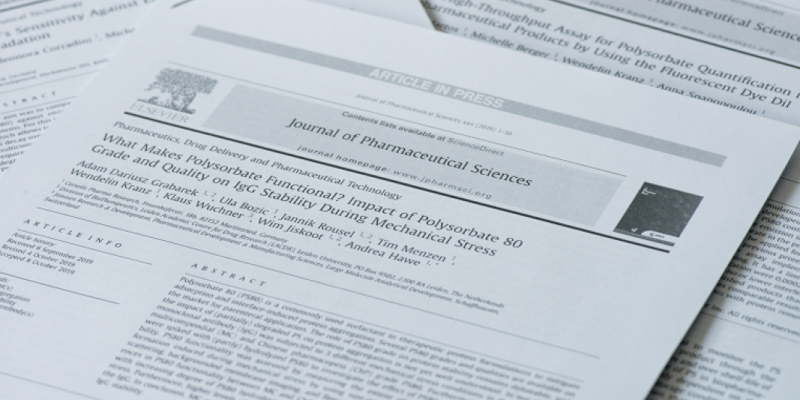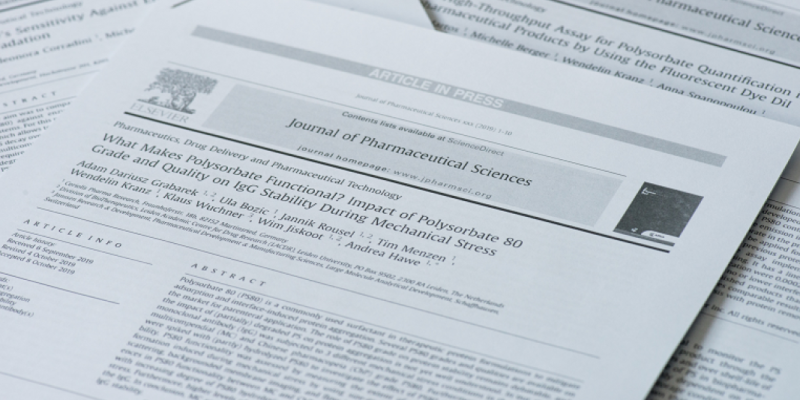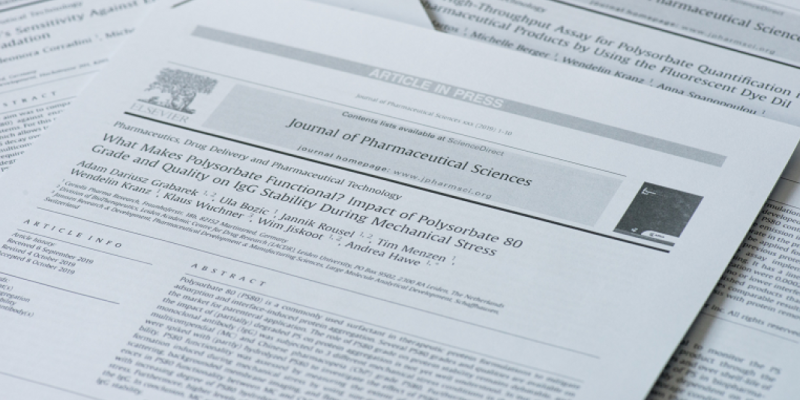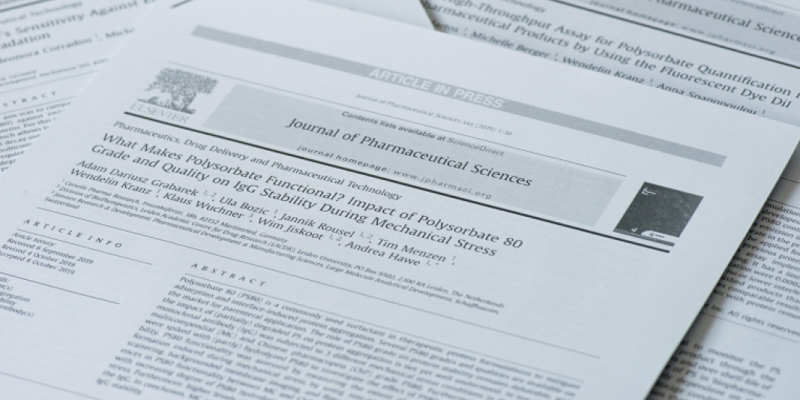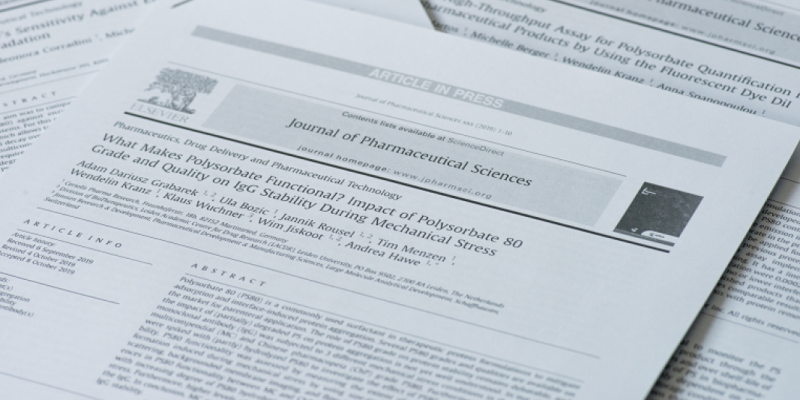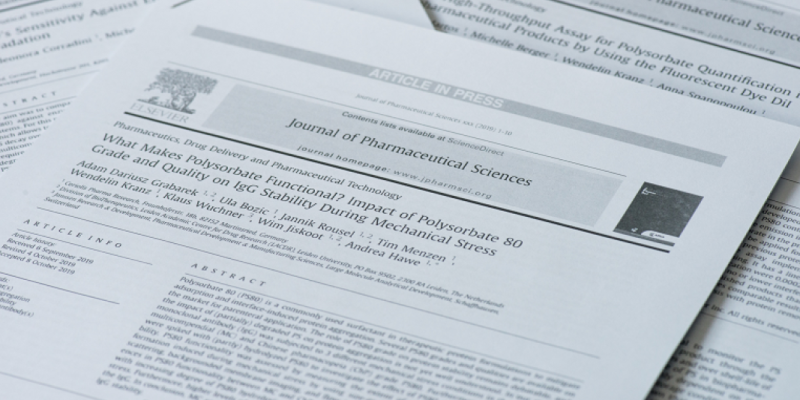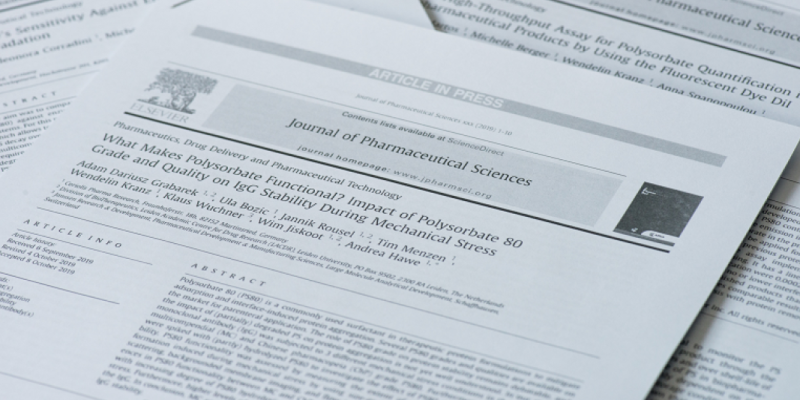Design of freeze-drying cycles: The determination of heat transfer coefficient
Int. J. Pharm. May 2022
Design of freeze-drying cycles: The determination of heat transfer coefficient by using heat flux sensor and MicroFD
The complexity of biopharmaceuticals requires often the freeze-drying as stabilizing process. Inadequate parameters in the primary drying phase can impair product quality, besides, increasing time and costs. Therefore, the process requires a thorough characterization and with this purpose, heat flux sensor (HFS) and miniaturized freeze-dryers conceived to emulate larger equipment, were recently introduced. Our study investigates, for the first time, the use of HFS and miniaturized freeze-dryer (MicroFD) in combination to obtain the heat transfer coefficient (Kv) for two formulation types and freezing protocols. First, as the MicroFD presents the possibility to set the temperature of vial surrounding (LyoSIM), it was determined which set-up was representative for a lab-scale freeze drying process. Additionally, the HFS-based results were compared with the data obtained by the most accurate, but time-consuming and invasive gravimetric method. Second, the role of atypical heat transfer was evaluated for HFS and gravimetric methodology with gold-coated and un-coated vials. Obtained results revealed the HFS and the MicroFD can be used in combination to obtain Kv real-time with much less effort that gravimetrically, to study different vial scenarios, and to design lyophilization processes with a limited amount of material and experiments.
Graphical abstract:

Keywords: Freeze-drying, MicroFD, PAT, Heat flux sensor, Gravimetric technique
Int. J. Pharm. May 2022

